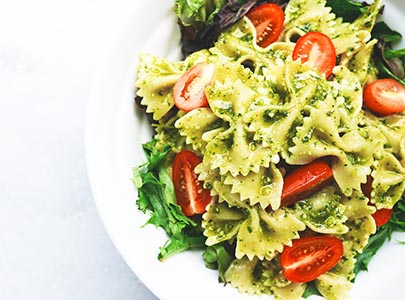The best way to create a seasonal menu is to use only fresh ingredients and prepare them in ways that showcase their best traits. This will make your menu healthy, simple and delicious. What’s more, a good seasonal menu allows you to adapt your menu to include items that are readily available throughout the year. In this article, we explain how to create a winning seasonal menu with the right supplies.
Creating a Winning Seasonal Menu

Create a base for your seasonal menu
The base of your seasonal menu should be something that is easy to prepare and healthy. It should also be affordable so that you don't have to spend too much money on it. The best part? You can use this base recipe again and again throughout the year.
The following are examples of some great base recipes:
- A vegetable medley stew that features seasonal vegetables.
- Salads and soups that incorporate different seasonal ingredients, like parsnip soup or radish salad.
- Making dishes that reflect the weather, such as roasts for colder months.
Have fun with your seasonal menus
Think about the theme of your seasonal menu. Is it going to be a harvest-inspired dish? Or maybe an autumnal favourite? Whatever your theme may be, make sure you have enough space in your kitchen for all of these seasonal ingredients! Here are a few more tips to inject some fun and creativity into your seasonal menu:
- Use the seasons as inspiration for what to serve and how you're going to serve it. You could serve butternut squash ravioli with sage butter during autumn or a hearty steak and ale pie with roasted brussels sprouts in winter, for example.
- Don't forget about the presentation. Adding colourful garnishes or serving dishes on interesting plates helps create an impactful dining experience for guests at home or at work functions (and also makes cleanup easier).

Keep it simple, be creative and don't forget to have fun!
Don't be afraid to experiment with your seasonal menu. While you can always go back and fix something that didn't work out, it's better to try out new ideas than not. It also gives you an opportunity to explore unique ingredients found only during certain seasons, such as berry tarts during summer or root vegetables during the colder months.
It’s also important to have fun while creating your seasonal menu. It's easy for chefs who are passionate about their craft or art form to get lost in the details of what they're doing and forget about having fun with food. They often forget that there are people who will be eating their creations and enjoying them as much as they enjoy creating them. Don't forget this important part of being a chef: your customers' experience is just as important as yours!
Decide on a theme
When deciding on a theme for your seasonal menu, it's important to keep in mind that the theme should be easy to execute and relevant to your restaurant (if creating a commercial seasonal menu). For example, if your restaurant has an Italian-inspired menu year-round and you want to switch it up with a Spanish-inspired menu during the summer months, this may not be feasible since most of your ingredients come from local farmers who can only grow certain things at certain times of the year.
Check your storage capacity
When you're shopping for produce, it's important to keep in mind that produce may need to be stored at different temperatures to ensure it stays fresh. Some produce, for example, is best stored at room temperature or cooler and some require refrigeration.
When you stock up on seasonal produce, make sure that you have enough to last the whole season and are able to store it optimally. For example, if you need to freeze seasonal produce to ensure it lasts for the entire season but have limited freezer space, you may need to reconsider and choose a different ingredient to feature on your menu.
Find and store herbs and other ingredients that don't require refrigeration
Herbs and spices are a great way to add flavour to your dishes. They can also be expensive, so finding ways to store them without refrigeration will help cut down on costs.
Airtight jars with lids are one option for storing herbs and other ingredients that don't require refrigeration. You can buy these jars in bulk at most stores where they sell kitchen and restaurant supplies, or you could look into buying them online if you're looking for more variety in size and shape than what's available locally.
Conclusion
With the right restaurant and kitchen supplies, you can create a seasonal menu that is healthy and easy to prepare. You can also save money by using local ingredients and reducing waste by buying produce that doesn't require refrigeration. The most important thing is to have fun when creating your menu!
Sign up to Cooksmill's Newsletter!
Receive all the latest offers, competitions, new products, and current blogs.

